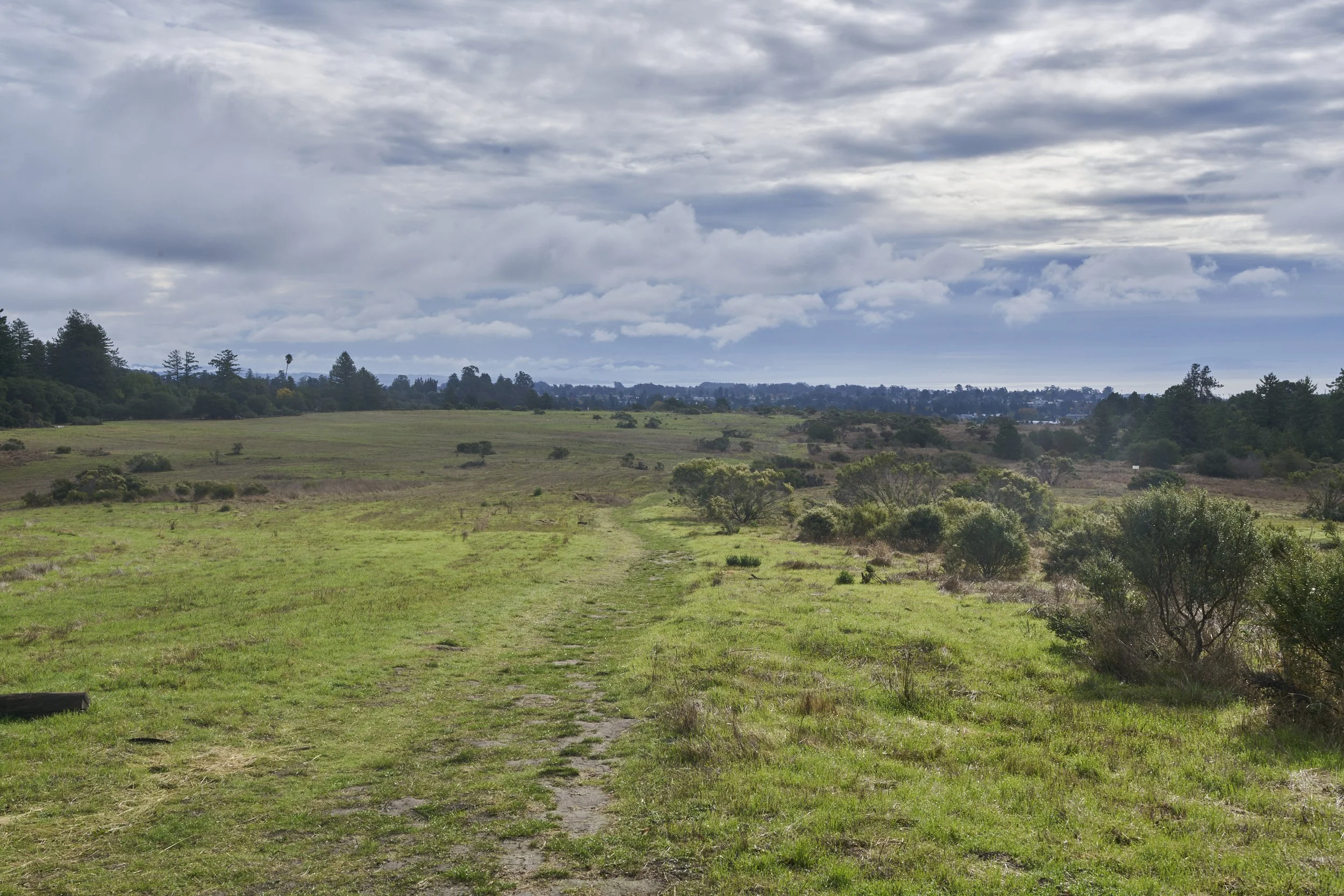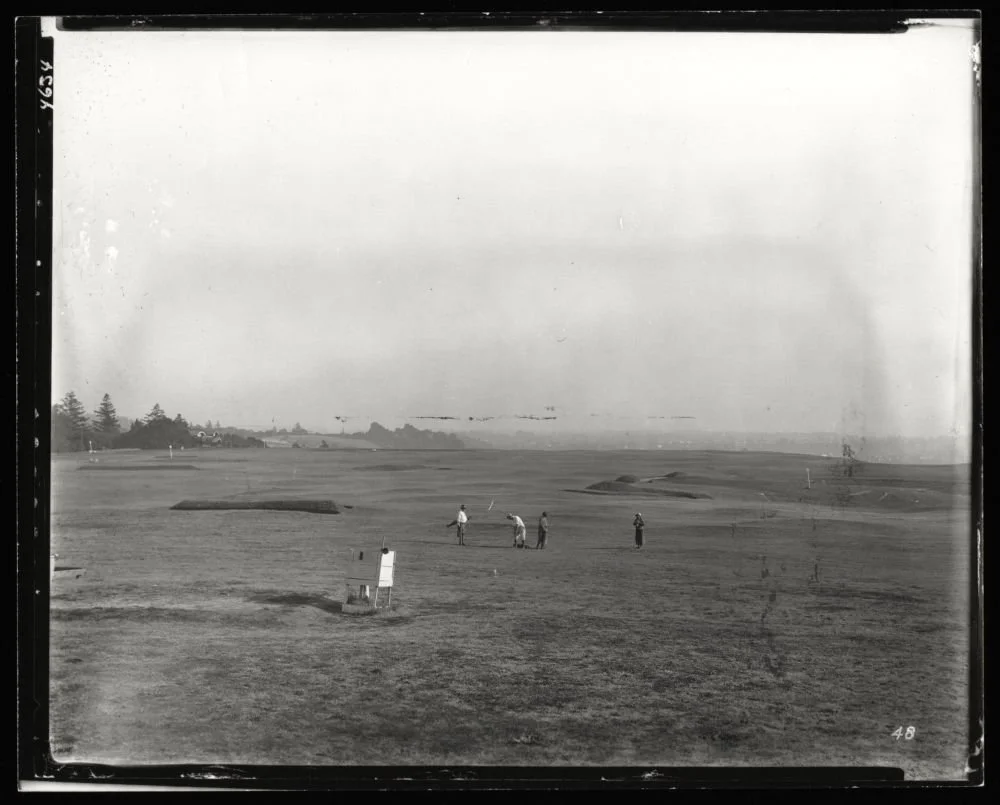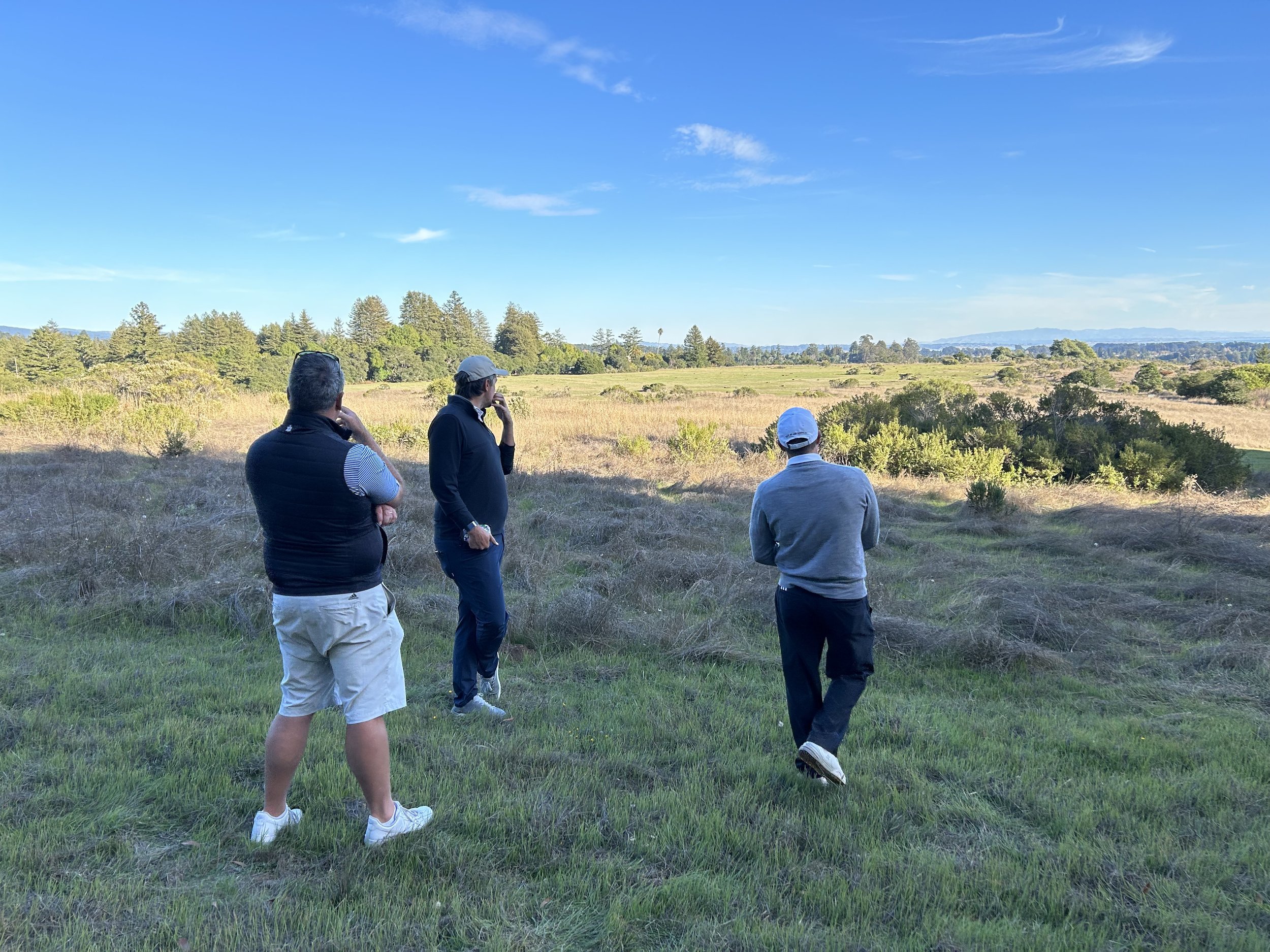Pogonip Open Space: A Storied Past and a Regenerative Future
5 Minute Read
August 5th, 2025 • By Caroline Reitmeyer
A Storied Past
Pogonip’s story as a golf course begins in 1910 with the creation of the Casa del Rey Golf Club, designed by renowned golf architect Tom Bendelow. Bendelow, a Scotsman from Aberdeen, was one of the most pivotal figures in the early development of golf in North America. Known as the “Johnny Appleseed of American Golf”, Bendelow focused on growing the game of golf in the United States through his work as a golf instructor and later as a golf course designer, where he is credited with designing more than 600 golf courses across the United States and Canada.
His design philosophy emphasized simplicity, affordability, and inclusivity, creating courses that welcomed part-time players, women, and families, and were meant to promote play and practice rather than perfection. These were not championship layouts, but approachable, thoughtfully routed courses that encouraged participation, improved player proficiency, and could be maintained without great expense, true public spaces designed to grow the game and serve the community. This ethos aligned well with the working-class character of early 20th-century Santa Cruz. Casa del Rey was no exception. The course was perched just above town, quickly becoming a local fixture that offered scenic views and affordable recreation to the community.
Despite its early success, the Casa del Rey Golf Club faced financial difficulties due to the opening of the more upscale Pasatiempo Golf Club in 1929, just a few miles away, as well as the onset of the Great Depression. Casa del Rey closed shortly after, and the land entered a period of transformation.
In 1936, Dorothy Deming Wheeler, a pioneer of women’s sports, established the Pogonip Polo Club on the former golf course grounds. She offered affordable riding lessons, hosted community polo matches, and encouraged women and children to participate in a sport that had long excluded them. That same year, Wheeler founded and chaired the Pacific Coast Women’s Polo Association, laying the groundwork for what would become the United States Women’s Polo Association.
During World War II, the polo grounds became a base for the Red Cross Motor Corps’ Mounted Unit, a team of women on horseback who assisted in search-and-rescue and provided first aid to downed pilots. The site also served as a rehabilitation space for injured servicemen. After the war, the Pogonip Club reopened as a private social organization before being transferred to the City of Santa Cruz in 1989 and formally preserved as public open space.
Tucked against the edge of Santa Cruz, California, Pogonip Open Space holds a rich cultural and community-rooted history. While this open space is currently a preserve, the area has great ecological potential with an opportunity to make great community connections.
Once stewarded by the Ohlone people, the land later became home to the Casa del Rey Golf Club. In the years since, it has served as polo fields, a war veteran rehabilitation site, a movie set, and now, a nature preserve. Each era has left its imprint. And today, it faces a rare and powerful opportunity: the chance to be reimagined not just as a golf course, but as a regenerative space where ecology, culture, and community can thrive together.
The vision for Pogonip centers on revitalizing a historic landscape in a way that strengthens its ecological function, community connection, and recreational value. It is about restoring damaged soils and habitats, expanding opportunities for public access and outdoor learning, and honoring the site’s natural and cultural heritage. Through thoughtful, community-rooted design, Pogonip can become a vibrant model for how shared landscapes can support both environmental renewal and inclusive, accessible recreation.
Current Challenges and Untapped Potential
Today, Pogonip Open Space stands at a crossroads. The site is rich with possibilities, but not without obstacles. Years of fragmented use have left their mark. The site’s past as a shooting range has resulted in soil contamination that poses environmental and public health concerns. Long-standing social challenges, including unsheltered homelessness, have led to safety issues and complicated land use discussions. Meanwhile, deteriorating infrastructure, crumbling trails, neglected buildings, and outdated utilities further hamper the site’s accessibility and functionality. Add to this a maze of bureaucratic hurdles, and it is clear that reviving Pogonip is not a simple task.
Yet beneath these visible challenges lies an extraordinary opportunity. The contours of the old golf course still whisper their original intent: fairways that flow with the land, scenic ridgelines, and a layout ideally suited for low-impact recreation and restoration. These “bones” remain intact, waiting for a vision bold enough to reimagine them. Rather than starting from scratch, Pogonip offers a rare chance to build upon what once was, blending historical foundations with regenerative design principles to create something entirely new, but deeply rooted in place.
The Pogonip Club clubhouse after nearly two decades of abandonment, July 2007. Photo from mBeth.
Reimagining Pogonip: From Restoration to Regeneration
The vision for Pogonip’s future begins with Santa Cruz native Isaac Weintraub, who has championed the idea of bringing new life to the land. His goal is to restore Pogonip as a space that supports ecological renewal, public recreation, and community connection. This vision proposes more than a golf course. It envisions a regenerative landscape—a place where a low-impact, walkable course is woven into a broader ecosystem of habitat restoration, native gardens, public trails, and community gathering spaces. A course that reflects the ethos of Tom Bendelow by being public, affordable, and welcoming, while also responding to modern environmental and social needs.
Greener Golf is proud to support this effort, working alongside Isaac to design a space that integrates sustainability, accessibility, and stewardship into every detail. The ethics of permaculture guide the design, care for the earth, care for people, and fair share, and are informed by the Greener Golf Index. This holistic framework equips golf courses to track their footprint, take responsibility for their role in the landscape, and lead with purpose-driven design and management.
Restoration efforts will begin with soil remediation through bio-, phyto-, and myco-remediation techniques that remove contaminants using natural processes. Native plant communities and pollinator-friendly habitat will be reintroduced across out-of-play areas, which can be restored with native plantings that provide habitat for local wildlife and support broader ecological function across the site. Education and public programming are also central to the plan. The historic clubhouse could be revitalized as an environmental learning center, offering space for students, residents, and visitors to engage with restoration, sustainability, and the site’s layered history. The course itself can function as a living classroom, where ecology and golf exist side by side.
The revitalization of Pogonip has the potential to create local jobs, such as clubhouse and maintenance staff, stewardship professionals, and educators. By sourcing materials, services, and food locally, the project can directly support Santa Cruz businesses while keeping economic benefits rooted in the community. Additionally, the course’s accessibility and unique and fun design could attract visitors from across the region, boosting local tourism and strengthening the connection between Pogonip and the broader Santa Cruz economy.
A Model for What’s Possible
At its core, this project is about serving the people of Santa Cruz. The revitalized Pogonip will be designed with accessibility and inclusion at the forefront, restoring its identity as a public, affordable, and welcoming space in the spirit of Tom Bendelow’s original vision for the site. Bendelow believed golf should be open to all, a philosophy this project embraces not only through its design, but through its commitment to youth development and community programming. Pogonip has the potential to become a home for Santa Cruz Junior Golf and other youth initiatives, creating opportunities to nurture the next generation of golfers.
Pogonip represents more than just a local effort. It offers a broader model for how golf and public landscapes can evolve, regenerative in design, inclusive in access, and grounded in ecological responsibility. It responds to timely conversations about climate adaptation, equitable land use, and the role of shared multifunctional green spaces in community wellbeing.
This is not about returning to what once was. It is about building something new, rooted in history, responsive to the present, and forward-looking in every sense.




